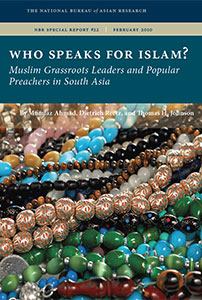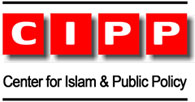 Muslim Grassroots Leaders and Popular Preachers in South Asia
Muslim Grassroots Leaders and Popular Preachers in South Asia
Table of Contents
Foreword
Peter Mandaville
Media-Based Preachers and the Creation of New Muslim Publics in Pakistan
Mumtaz Ahmad
Muslim Grassroots Leaders in India: National Issues and Local Leadership
Dietrich Reetz
Religious Figures, Insurgency, and Jihad in Southern Afghanistan
Thomas H. Johnson
Foreword
Despite considerable chatter in recent years about the globalization of religious authority in the Muslim world and the importance of transnational networks, public opinion polls conducted by the Pew Global Attitudes Project in 2006 suggest that the vast majority of Muslims worldwide, including 46% in Pakistan, turn first and foremost to local religious leaders for guidance in matters relating to Islam. This would suggest that in trying to understand “who speaks for Islam” in any particular setting, we would do well to pay close attention to the voices shaping the immediate environments inhabited by Muslims. This NBR Special Report, “Who Speaks for Islam? Muslim Grassroots Leaders and Popular Preachers in South Asia,” explores the changing dynamics of religious order in three key national settings: Pakistan, Afghanistan, and India. The authors of the three studies that comprise this report are all noted experts on their respective countries, having spent considerable time on the ground observing first hand the production and circulation of religious knowledge at the popular level.
Reading across the three cases, several key themes of crosscutting significance seem to emerge. First is the fact that because the nations in question are all ethnically and religiously heterogeneous, deeply embedded sectarian differences and social segmentation has ensued, as Dietrich Reetz points out, such that effective national religious leaderships or state-controlled religion have never emerged (despite the best efforts of certain countries, such as Pakistan). Second, as in much of the Muslim world today, in South Asia the emergence of a wide range of new, nontraditional voices of religious authority is occurring. Where the production of religious knowledge was once the sole preserve of classically trained religious scholars (ulema), there is now a new generation of lay preachers—whose educational backgrounds are often in the medical and scientific fields—rising to the fore. The Mumbai-based preacher Zakir Naik, phenomenally popular in recent years, is a clear case in point. Third, and related to this last point, has been the important role played by new media. The Internet is certainly important here, but in the context of South Asia, satellite television and mobile phone messaging (SMS) have been the main drivers. This use of new media, it is important to note, is by no means confined to the new class of religious voices. More traditional religious scholars have also been quick to seize on the potential of the new tools to reach ever wider audiences. Finally, and here we come squarely to the realm of politics, it is clear that local or provincial religious leaders—and especially some of the traditional pirs , or classical scholars, of the Sufi orders—serve as important interlocutors between society and the state. Here they can have an impact on both formal politics, as in the case of the Jamiat Ulema-e-Islam (JUI), the Pakistani political party affiliated with Deobandi scholars, and informally as regional kingmakers or in alliance with tribal leaders, as in the case of some of the madrasah-based networks in Pakistan’s tribal areas.
Unique in coverage, this Special Report represents the first systematic inventorying of contemporary religious leadership in South Asia. This report is essential reading for anyone wanting to understand how religious opinion and world-views are shaped in the region today.
Peter Mandaville
Senior Advisor, Muslim Asia Initiatives
The National Bureau of Asian Research
Director, Center for Global Studies
George Mason University
